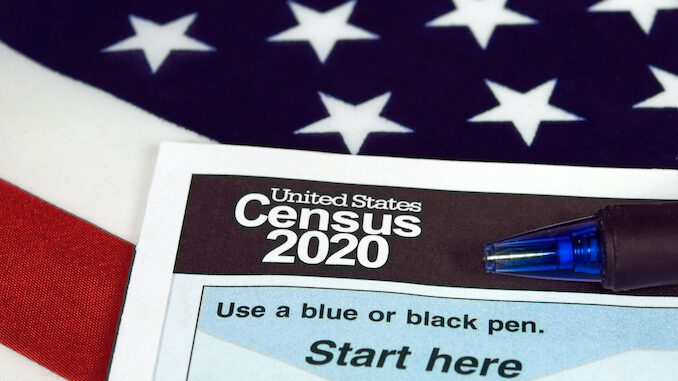
By Carolyn Betts, Esq.
The 2020 decennial census is upon us. Census mailers requesting online responses have been mailed throughout the United States.
Don’t believe the communication you may have received saying your response is due on April 1, 2020. As you can well imagine, the ability of the Census Bureau to conduct this census has been affected by the pandemic and various stay-at-home orders. The deadline for responses from individual households has been extended to August 14, 2020. Census takers have been scheduled to interview about 2,000 households (outside their homes) in remote parts of northern Maine and southeast Alaska during the March 16 to May 14 period. The schedule for non-response follow-up by census takers is scheduled to start on May 28, 2020.
The original purpose of the decennial census as expressed in Article I, Section 2 of the U.S. Constitution was to determine representation by the states in the House of Representatives. In 1954, the census requirement and related penalties were codified in Title 13 of the U.S. Code. Under Title 13, the census is conducted by the Census Bureau, within the Department of Commerce and the Bureau of the Census must inform Congress of the general subjects to be addressed in a decennial census three years in advance and of the specific questions two years in advance of the census.
In the United States, federal laws include the Constitution, statutes contained in the United States Code and case law interpreting the Constitution, statues and the regulations promulgated by the Executive Branch to provide implementing detail regarding the statutes. The U.S. Supreme Court and lower courts have held in various cases that the government is authorized to collect statistics through the census. It is on the authority of such court opinions that the Census Bureau collects information for the allocation of funding for federal programs.
For the 2020 decennial census, there are twelve questions. The data collected about individual households is as of April 1. Homeless and congregate populations are counted separately. In addition to the number of members of a household on April 1, the household census form asks:
- Whether the household is a house, apartment or mobile home;
- Whether anyone other than those counted in the household is staying in the household on April 1 (and how many);
- A telephone number (for follow-up);
- The name (on date of birth), sex, age and date of birth of each member of the household;
- Whether a member of the household is Hispanic, Latino or of Spanish origin;
- The race and (national) origin of each member of the household as selected from the following categories: White; Black or African American; American Indian or Alaska Native; Chinese; Filipino; Asian Indian; Vietnamese; Korean; Japanese; other Asian; Native Hawaiian; Samoan; Chamorro; other Pacific Islander; some other race;
- Whether each person usually lives or stays somewhere else and an explanation (College? Military assignment? Seasonal or second residence?); and
- Relationship of each member of the household to the original reporting person (opposite-sex husband/wife/spouse; opposite-sex unmarried partner; same-sex husband/wife/spouse; same-sex unmarried partner; biological son or daughter; adopted son or daughter; stepson or stepdaughter; brother or sister; father or mother; grandchild; parent-in-law; son-in-law or daughter-in-law; other relative; roommate or housemate; foster child; other nonrelative).
LINKS:
COVID-19 Operational Adjustments
2020 Census Operational Adjustments Due to COVID-19 (PDF)
Solari Reports:
Solari Special Report: Economic Census – What are the Penalty Provisions?
